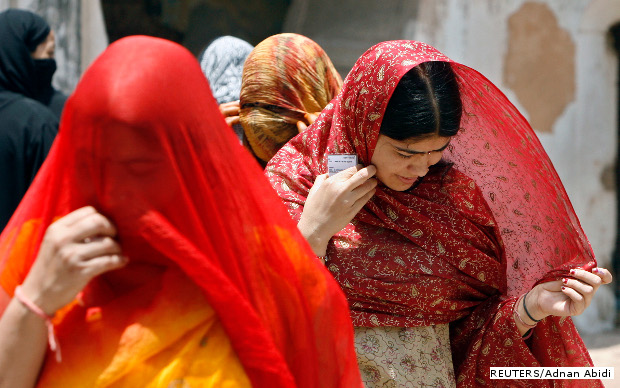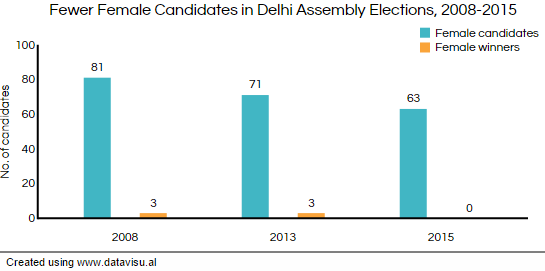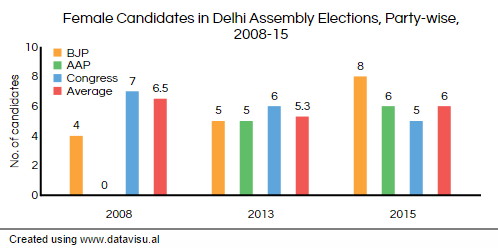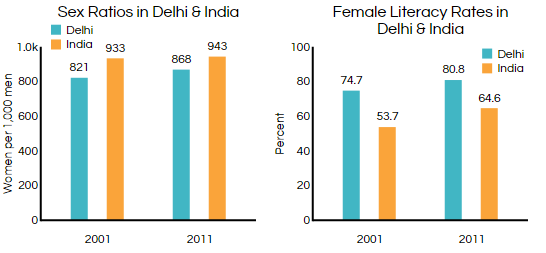How Delhi Keeps Women Out Of Elections

With Kiran Bedi leading the Delhi election campaign for the Bharatiya Janata Party (BJP) and Sheila Dixit already having been chief minister for three terms, it might appear that women have a significant role to play in the February 7 elections.
Instead, the data show that the percentage of female candidates has declined from 10.2% during the 2008 elections to 9.4% for the forthcoming elections.
Women make up 46.4% of the city’s 16.8 million people, yet the last two elections, in 2008 and 2013, returned only three female winners, a success rate of 3.7% and 4.2% respectively.
The number of female candidates across parties in Delhi has declined from 81 in 2008 to 63 in the 2015 elections. Although the three main parties (BJP, Congress and Aam Aadmi Party) have only 19 female candidates among themselves, this is one of the highest numbers compared with the last two elections.

Source: Election Commission 2008, 2013,*2015 results awaited
Let us look at the party-wise breakup of women candidates.

Source: Election Commission
The addition of AAP to the electoral landscape has pushed up the numbers of female candidates.
The number of women contesting on a Congress ticket has come down from seven in 2008 to five in 2015. Their ratio has declined from 10% of total candidates to 7%. During the same period, the BJP has seen the number of women candidates rise from four to eight – from 5% to 11%.
Delhi is one of the most progressive states in the country on female literacy rates, but is way behind on the adult sex ratio, the number of women for every 1,000 men

Source: Census
In 2001, 74.7% of Delhi’s women were educated, against the national average of 53.7%. Delhi improved its female literacy rate to 80.8% in 2011, against the national average of 64.6%.
But the state has always lagged behind the national average on the adult sex ratio. While Delhi had a sex ratio of 821 in 2001, against the national average of 933, it has improved only marginally to 868 in 2011 as against the national average of 943.
While 10% of the total candidates were female in 2008, the ratio was down to 9.6% in 2013.
An earlier report by IndiaSpend found that literate women tended not to stand for elections.
Female voting went up from 56% in 2008 to 65% in 2013. This figure is in line with the findings of our report which showed literate women are more active voters, even if they largely do not contest elections.
_____________________________________________________________
“Liked this story? Indiaspend.org is a non-profit, and we depend on readers like you to drive our public-interest journalism efforts. Donate Rs 500; Rs 1,000, Rs 2,000.”


